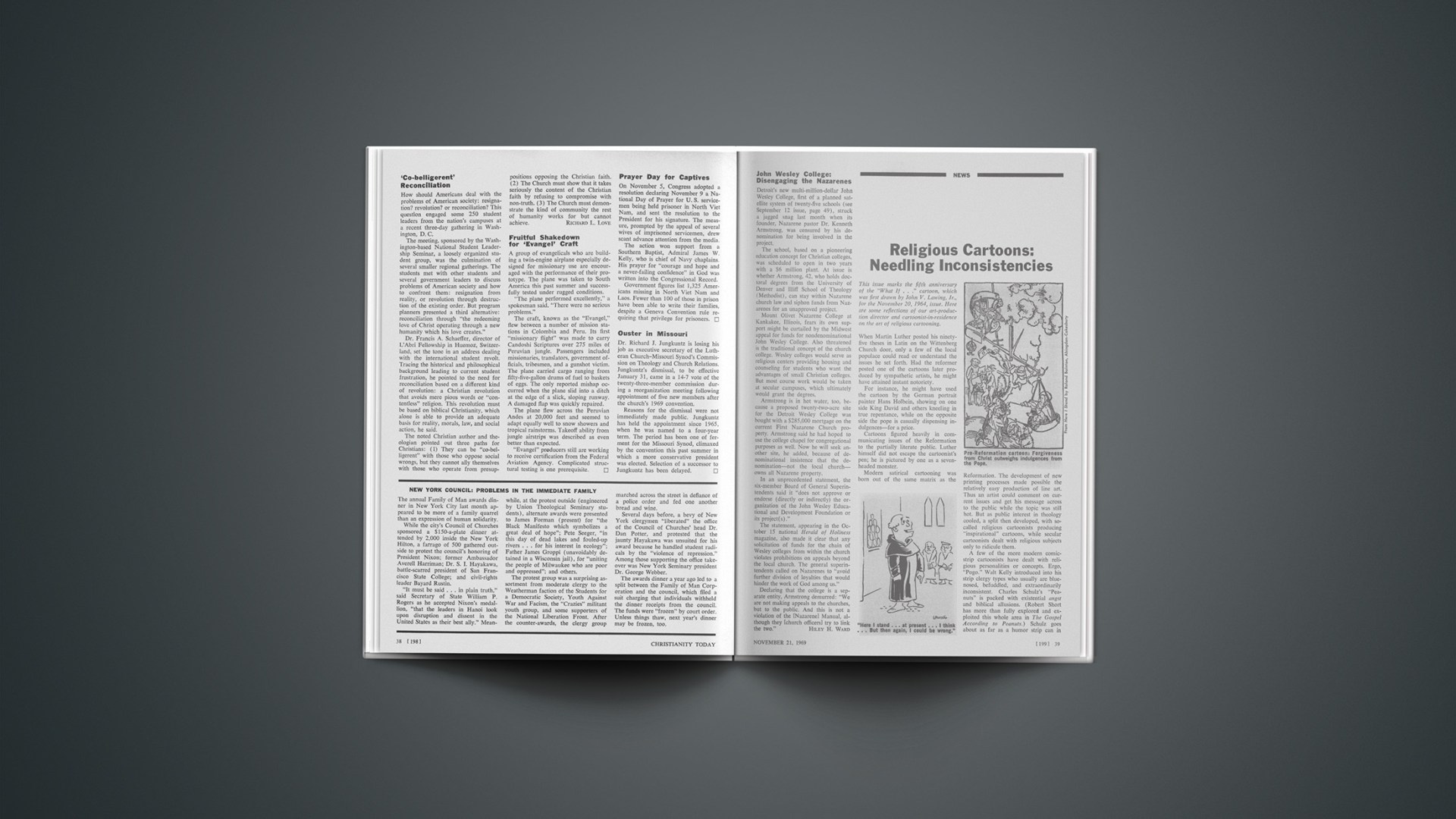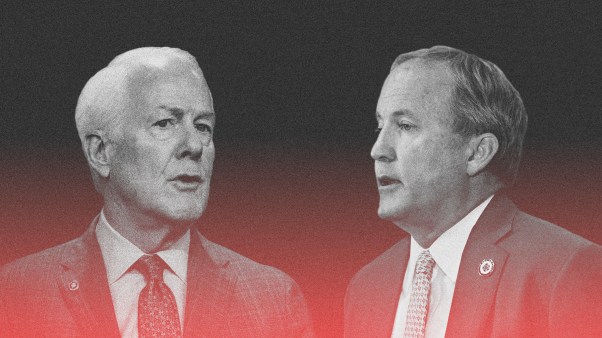This issue marks the fifth anniversary of the “What If …” cartoon, which was first drawn by John V. Lawing, Jr., for the November 20, 1964, issue. Here are some reflections of our art-production director and cartoonist-in-residence on the art of religious cartooning.
When Martin Luther posted his ninety-five theses in Latin on the Wittenberg Church door, only a few of the local populace could read or understand the issues he set forth. Had the reformer posted one of the cartoons later produced by sympathetic artists, he might have attained instant notoriety.
For instance, he might have used the cartoon by the German portrait painter Hans Holbein, showing on one side King David and others kneeling in true repentance, while on the opposite side the pope is casually dispensing indulgences—for a price.
Cartoons figured heavily in communicating issues of the Reformation to the partially literate public. Luther himself did not escape the cartoonist’s pen; he is pictured by one as a sevenheaded monster.
Modern satirical cartooning was born out of the same matrix as the Reformation. The development of new printing processes made possible the relatively easy production of line art. Thus an artist could comment on current issues and get his message across to the public while the topic was still hot. But as public interest in theology cooled, a split then developed, with so-called religious cartoonists producing “inspirational” cartoons, while secular cartoonists dealt with religious subjects only to ridicule them.
A few of the more modern comic-strip cartoonists have dealt with religious personalities or concepts. Ergo, “Pogo.” Walt Kelly introduced into his strip clergy types who usually are bluenosed, befuddled, and extraordinarily inconsistent. Charles Schulz’s “Peanuts” is packed with existential angst and biblical allusions. (Robert Short has more than fully explored and exploited this whole area in The Gospel According to Peanuts.) Schulz goes about as far as a humor strip can in trying to heighten the readers’ sensitivity to life’s transcendent dimensions.
Because of its high visibility, the Salvation Army seems to have suffered more at the hands of modern secular cartoonists than any other religious group. There’s the New Yorker cartoon by Galbraith that shows a Salvationist officer introducing a small, balding, milquetoast figure with the words: “We are going to hear from one who has sinned greatly.” A Playboy cartoon pictured two well-dressed Negro men watching a Salvation Army street band and commenting on how “those people really have rhythm.”
Since Vatican II the Catholic Church has been gaining on the Salvation Army as a target for cartoonists’ fiery ink-filled darts. An Esquire cartoon shows two priests agreeing, as a Mephistophelian figure with horns and hoofs enters the conference room, that ecumenism may have gone too far.
As the Church and religion have lost their sacred-cow status with the daily press and have become increasingly controversial (with their anti-war pronouncements, situation ethics, swinging clergymen, and so on), there has been a small renaissance in religious cartooning.
This issue marks the fifth anniversary of CHRISTIANITY TODAY’S “What If …” series. And just two years ago this month, CHRISTIANITY TODAY became perhaps the first major religious periodical to use a satirical cartoon on its cover.
In the past few years religion editors have become slightly more aware of the potential of this medium (despite the resistance of some to “those ugly pictures”).
Joe Noonan, whose stylized and excellent cartoons in the National Catholic Reporter have needled officialdom, was tapped a year ago by the Christian Century to bring needed brightening to its pages.
Given a greater opportunity in future days, these cartoonists may highlight our hypocrisies and needle our inconsistencies to the point that the Church will become truer to its real priorities.










